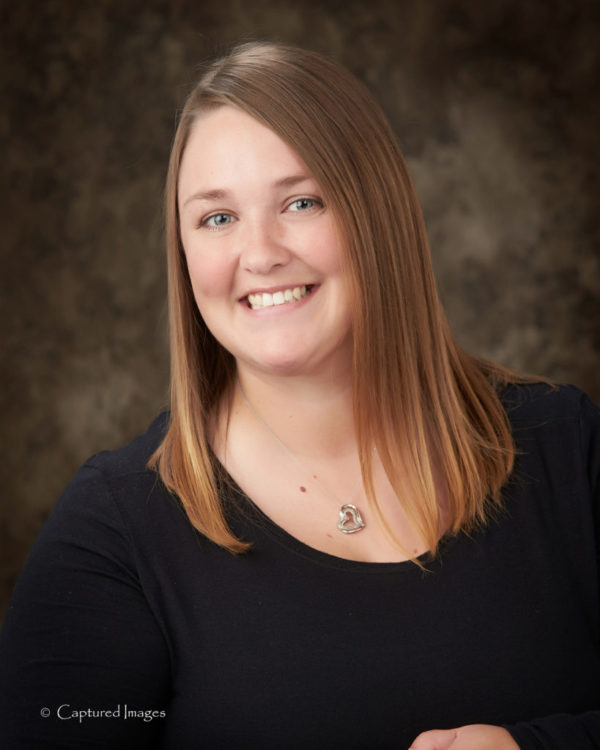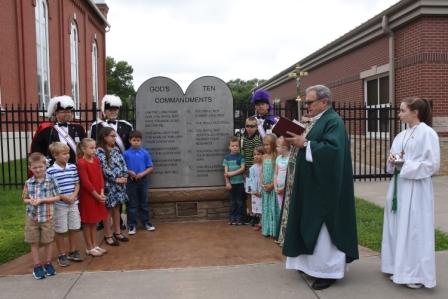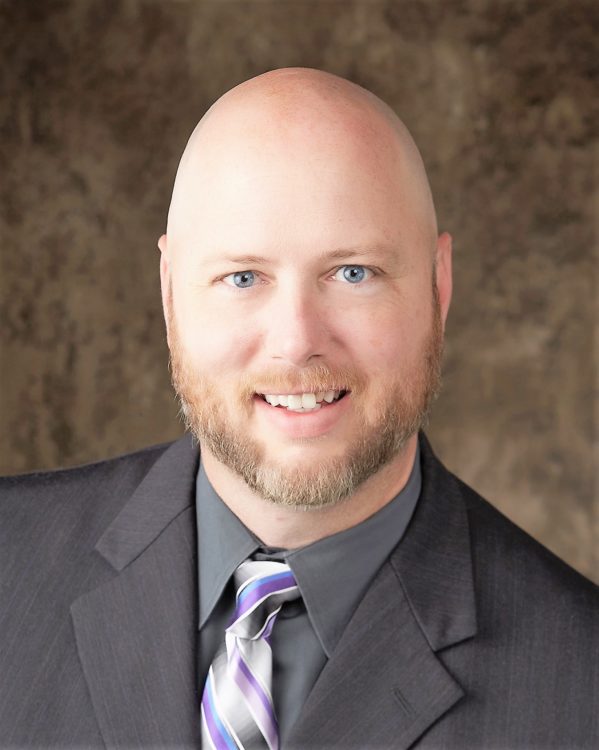Click below for the Bourbon County Sheriff’s Office daily reports. The office can be reached at (620) 223-2380.
All posts by Submitted Story
Canon Receives Award
Fort Scott Public Library is pleased to announce that Valetta Cannon, our Children and Teen Services Librarian and Assistant Director, will receive an Excellence Award from the Southeast Kansas Library System on September 18th.
The award presentation by SEKLS staff will be at 6 p.m. at the Fort Scott City Commission meeting, and the Library will host a reception after the presentation.
The library will remain unlocked after closing for people who wish to attend the reception. All ages are welcome.
The Excellence Awards recognize exemplary library service or support of libraries in southeast Kansas.
Awards include a $1,000 cash award to the library, a trophy for the winner, and the winner’s name attached to a traveling plaque. The four recipients of this year’s award were announced June 1, 2018 at the Southeast Kansas Library System annual meeting.
Ten Commandments Monument Built for St. Mary’s
Fr. Robert Wachter is seen here blessing the new Ten Commandments monument that was built and put in place between Saint Mary’s Catholic School and Mary Queen of Angels Catholic Church. The event took place Sunday, Sept. 9.
The local council of Saint Bernard’s Council #796 paid for the heavy duty powder coated metal frame.
The face of the commandments is made out of 3/16” thick stainless steel and was donated by a brother knight and his wife. The letters were laser cut through the metal. Solar powered lights are set inside of the frame to light up the letters at night.
Brother Knights and family members donated the labor as well as the concrete.
Helping with the ceremony was 4th Degree Knights (L to R) Scott Flater, Joe Barr, and Mark McCoy.
Council #796 felt that at this time in our history where family morals seem to be fading away, there needed to be a reminder posted.
The school children walk by this monument each day they go to daily Mass and it can be seen by all passing by on foot or in a vehicle.
The bronze plaque below the Commandments says “May all that look upon these words, pause and remember the Lord our God and do our very best to follow his Commandments.”
4-H Poultry Projects

4-H Poultry Project
The poultry project is designed to help you learn about chickens and other poultry. You will acquire an understanding of scientific poultry management and marketing practices. You will gain business experience and insight into the values and principles of purchasing, marketing, record keeping and exhibiting poultry.
There is 4-H Curriculum that can be purchased for anyone interested in the Poultry project. Here is a breakdown of what youth can learn at different ages/stages:
Ages 7-9:
-
Learn poultry breeds and body parts
-
Learn how to care for and handle your birds
-
Practice showmanship techniques
Ages 10-13:
-
Learn how eggs are formed
-
Select and judge broilers
-
Make an egg candler
-
Learn about pecking orders
Ages 14 and Older:
-
Lead younger members in egg experiments
-
Learn how to process chickens for food
-
Learn about biotechnology and poultry careers
In addition to the curriculum, youth are also offered the opportunity to attend project meetings held by volunteers. Each year, youth are able to demonstrate the hard work that has been spent by participating locally at the county fair, area spring shows, and depending on age and placing, the Kansas State Fair.
The poultry project is a great opportunity for youth to learn important life skills. For more information about this project, contact Jennifer K. Terrell, 4-H Youth Development for K-State Research and Extension – Southwind District at [email protected] or 620-244-3826.
Free Friday Night Concert Sept. 14 at Heritage Pavilion
Amber and Ryan Goodbody are the featured artists this Friday night at the Heritage Park Pavilion, First and Main Streets.
Also featured will be David Pricket, guitar and vocal; Floyd Feezell, vocal; and Marilyn Adcock. guitar, autoharp, and vocals.
“The weather is predicted to be good so come early and bring your lawn chairs,” Ralph Carlson, coordinator of the Chamber of Commerce sponsored event, said. “I am pleased to have this lineup for this Friday.”
Liquor By The Drink Educational Dinner Sept. 22
Art Walk Sept. 14 at Liberty Theater Patio
|
|
|||||||
|
|
Support The Fort/Honor U.S.A.
Telephone/Broadband Available to Low-Income Kansans
Lifeline Awareness Week promotes telephone and broadband resources available to help low-income Kansans stay connected
Topeka — Access to local emergency services and community resources is vital to all residents. Lifeline offers discounts to help low-income consumers connect to the nation’s voice and broadband networks, find jobs, access health care services, connect with family, and call for help in an emergency.
The Kansas Corporation Commission wants to create awareness of the Lifeline program during National Lifeline Awareness week, September 10-14. Under the federal Lifeline Program, low-income consumers can receive up to $9.25 per month off their monthly bill for phone, broadband, or bundled phone and broadband service. Some may also be eligible for the state Lifeline program that provides an additional $7.77 monthly discount. Forty-eight companies currently offer Lifeline services in Kansas.
Residents enrolled in any of the following assistance programs are eligible: Supplemental Nutrition Assistance Program (SNAP), Medicaid, Supplemental Security Income (SSI), Federal Public Housing Assistance (FHPA), Veterans Pension & Survivors Pension Benefit, Bureau of Indian Affairs General Assistance, Tribally Administered Temporary Assistance for Needy Families, Head Start Tribal Programs (only those meeting its income qualifying standard), the Food Distribution Program on Tribal Lands. Those at 135% of the federal poverty level also qualify. Participants must provide three consecutive months of statements as documentation of income, or provide a copy of their tax return for the previous year. Recertification is required each year.
Since 1985, the federal Lifeline program has provided a discount on phone service for qualifying consumers. In 2016, the program was extended to include broadband.
More information on program eligibility, enrollment and annual recertification is available on the KCC’s website: http://kcc.ks.gov/telecommunications/lifeline. For a list of Kansas providers, go to https://data.usac.org/publicreports/CompaniesNearMe/State/StateOption/KS.
The Bourbon County Sheriff’s Office Daily Reports
Click below for the Bourbon County Sheriff’s Office daily reports.
They can be reached at (620) 223-2380.
Death Notice of Mary Alice Foulk
Mary Alice Foulk, resident of Winfield, MO, died Monday, September 10, 2018, at her home.
Graveside services for Mary Alice Foulk will be held at 1:00 PM Friday, September 14th, in the Sheffield Cemetery, Arcadia, KS.
The family will receive friends from 5:00 until 7:00 PM Thursday evening at the Cheney Witt Chapel, 201 S. Main, Ft. Scott, KS. Words of remembrance may be submitted to the online guestbook at cheneywitt.com.
Droughts Effect Livestock
Summer Droughts Have Lingering Effects for Cattle after Recent Rains
According to Bob Weaber, Kansas State University Extension Cow-calf Specialist, drought-stressed pasture issues linger after rain. For many producers in Kansas, the last couple of weeks have brought much-needed rain to our r rangeland and helped fill ponds on which we depend for watering livestock. Undoubtedly, the rain was welcomed by many and does much to relieve the short surface water supplies. The spring and summer of 2018 will be remembered by many cattle producers due to the hot and dry conditions that persisted. The lack of rain resulted in subpar forage production for both cool and warm season grasslands. As a result, cattle producers will face a wide range of lingering effects of the drought over the coming months and perhaps years.
The lingering effects of a drought can be broadly classified into cow nutritional effects, cow reproductive effects, calf performance effects and rangeland/forage effects. All will take time for recovery but in each case, careful management can hasten the progression of recovery.
In some cases, the reduced forage supply has resulted in cows losing substantial body condition after calving. If calves have not been weaned, consider weaning them to reduce nutritional demands of the lactating cows. Weaning calves will help extend feed resources in short supply and help stop the slide in body condition. Remember cows should be in BCS 5-6 at calving. The interval immediately following weaning of spring-born calves provides the best chance of correcting body condition in cows as inexpensively as possible. Spring-calving cows at this time are in their second or early third trimester and, without the demand of lactation, are at their lowest point of nutritional needs during the production cycle.
Each body condition score that needs to be replaced represents approximately 80 lb. of body weight. Getting cows to gain 2 lb. per day for 90 to 100 days is easy and can be done inexpensively. Seek out your local extension professional for assistance in developing a low-cost supplementation strategy. Two pounds per day gain for 90 days can improve flesh on a BCS 4 cow and account for the growth of the fetus. Neglecting recovery of BCS in the thinner cows will result in extended postpartum intervals and decreased lactation performance in 2019. Worse yet, if these cows don’t recover adequate condition by the 2019 breeding season, conception rates will suffer, and the 2018 drought effects will carry on into 2020. Correcting BCS in drought-affected cows should be a high priority.
The 2018 drought has resulted in reduced fertility or increased embryonic mortality in some cases. Several reports suggest the excessive heat in late June and early July many have stressed cows sufficiently to cause early embryonic losses. A timely preg check by your veterinarian can help uncover the effects of the drought on reproduction in your herd. Embryonic losses may have resulted in cows returning to estrus and settling late in the breeding season and shifting the expected calving distribution for 2019. Knowing that shift now may allow producers to adjust feed supplementation and labor needs for the coming calving season to more appropriately align with demands. The drought may result in a larger than typical number of open cows in your herd. The timely preg check can help find these open cows and assist in developing either a strategy for culling or shifting them to a fall calving system. If feed resources are extremely tight, culling opens can extend feed availability for the reproductive herd.
The substantial recent rains don’t alleviate the short supply of standing forage available for grazing in many areas or the short hay supply. Careful range management and rest following the recent rains can help the grass stands regenerate root resources preparing them for the next spring growing season. If producers have tillable crop acreage, winter annuals or cover crops can help take the burden off pastures. The recent rains should make for good planting and germination conditions. Hay prices are likely to remain high in many parts of Kansas so seeking alternative forage or energy sources for cows is worth exploring. Corn remains fairly inexpensive and can be used as an effective energy source for cows.
Cow-calf producers are encouraged to critically evaluate their cow herd and forage conditions over the next few weeks to devise strategies to mitigate the 2018 drought effects. The clock is ticking on the options available. Don’t let the recent rains and green up of pastures be an excuse for inaction.







